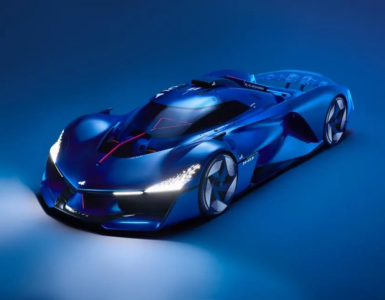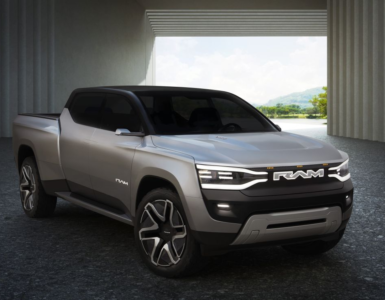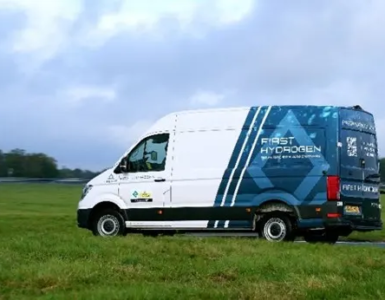Can Extreme H Race Series Make Hydrogen Relevant For Green Transport?
Electric SUV racing series Extreme E is about to start its fourth season, but this will also be its last. In 2025, the championship will change its name to Extreme H and switch from battery-electric power to hydrogen fuel cells. It’s a controversial move, but founder Alejandro Agag has never been shy of bold actions. I got the full story from Agag and other members of the team at the Extreme E season 3 final race weekend in Chile.
Although Extreme H has been discussed for a couple of years, the project has now reached an important level of maturity and recognition. A few days after the South American finale, the FIA announced that it had formed a joint hydrogen working group with Formula 1 and Extreme H.
Agag, says:
🔥 What about we co-host a webinar? Let's educate, captivate, and convert the hydrogen economy!
Hydrogen Central is the global go-to online magazine for the hydrogen economy, we can help you host impactful webinars that become a global reference on your topic and are an evergreen source of leads. Click here to request more details
It’s great for Extreme H,
“My pitch to Formula 1 was to say you don’t know which technology is going to be the one that wins. For the moment, Formula 1 is betting on synthetic fuels. But hydrogen could be a future part of the equation. We’re going to have the first and for quite a while the only pure hydrogen racing World Championship. All the others are very delayed. We’ve been doing tests in France. Everything is going in terms of performance, reliability, and safety. We will start making cars and have a hydrogen race in February 2025.”
Extreme H: Switching From E To H
Ali Russell, Managing Director of Extreme E, who was also a co-founder of Formula E, along with Agag, said:
We want to inspire motorsport fans to think about things differently.
“Hydrogen can be one of the solutions not just for emobility, but for green power. What we want to do is to accelerate that growth and adoption. We’ve got some challenges. The biggest one is education. Anytime you speak to someone about hydrogen they talk about its explosive nature and the Hindenburg airship disaster. We’re going to show the performance of the vehicles but also the fact that they can be resilient with the crashes that you have in this championship.”
Mark Grain, Technical Director of Extreme E, who previously worked with the McLaren F1 team, said:
We’ve learnt a lot from the Extreme E car, which we can carry forward.
“We’ve also done an excellent job developing the Extreme H car. It’s an all-new chassis, a purpose-built racing car for the hydrogen fuel cell, with another great battery pack from Williams. There’s no compromise. We demonstrated that an EV could operate anywhere in the world in harsh climatic and racing conditions, including vehicle contact. We want to do the same with Extreme H. We want to be able to demonstrate to the world that a hydrogen fuel cell vehicle can go anywhere, race hard, be put through a lot of stress and be another great racing car.”
“It’s important for every championship to have a unique selling point,”
“Hydrogen is very significant. The link with Formula 1 is also very important because there’s no motorsport organization commercially stronger than Formula 1.” However, the switch to Extreme H has already caused one team with no interest in hydrogen and a battery-only focus to quit the championship – ABT Cupra will not be competing in the fourth and final season of Extreme E.
“But there are other car manufacturers out there who focus more on hydrogen with whom we are in conversations already,”
“So it will balance out. Commercially, the opportunity is big, being the only one. We also love the challenge of working on a whole new technology that can have huge uses in the economy in general.” This won’t be like starting a whole new championship, because as little will be changed as possible. “We have teams, we have drivers, and we have a format that is great. We have TV contracts, we have television figures, which are decent, we have a social media following, and we have a fan base. So we just switch one letter from E to H. Well, it looks like one letter, but we must switch the whole ecosystem to hydrogen. We’re going to start with fuel cells, but we’re going to keep an eye on hydrogen combustion too. It’s not going to be easy, but that’s what motorsport is there for. Many people that like motorsport, like the technological side. This is fascinating for those fans, because they’re going to have a real technology challenge to read about and watch with Extreme H.”
Extreme H: Championing The Wider Use Cases Of Hydrogen
There had been concerns about some sponsors also leaving the series, too, but even teams with utility company links have been positive about the change.
Daniel Bailey, CEO of Veloce Racing, says:
I’m excited about Extreme H,
“We love this series. We’ve been in it now for three seasons. The transition to hydrogen opens another market for us from a sponsor perspective, and the car is fundamentally still going to be an EV. From an ethical electrification perspective, it is still very relevant, but opens alternative energy sources. We have an energy company, E.ON, as a partner for my team, and they’re very interested to hear more.”
“This coming season is really a transition one,”
“We’ve just got to get through it. Most of the teams will stay in. Cupra is out for sure. Maybe another one goes, but one or two new teams come in. I’m fine with eight to 10 teams because for 2025 we already have so many new teams that are interested in coming on board for hydrogen.” However, it doesn’t make any sense for these teams to enlist for one season of battery racing before the switch to hydrogen, so they will arrive in 2025.
Russell, says:
Everyone’s got an eye on hydrogen,
. “Everyone wants to understand it. Some people are more developed than others. Toyota, Honda, and BMW are well developed. Others aren’t but there is a strong level of interest. The secret of hydrogen, and green hydrogen specifically, is that it allows you to create mobile batteries in remote and varied locations. That’s where it has real power.”
Indeed, Extreme E has been using hydrogen for its site power for some time. “We need a multistrand approach to emobility. This is not about us believing that electric is dead. Electric is alive and well and will continue to grow. What we’re saying is, we believe a championship can take hydrogen to the next level and be that platform for energy companies to test and develop. These are extreme locations. If we can do it there, you can do it in Twickenham and France.”
Towards the end of 2023, the Extreme H car was tested on the same track as Formula E had used almost ten years earlier, which had particular significance for Russell given his experience with that series. “It’s spectacular,”
“Early testing has been great.” One thing Extreme H is hoping to build is the rules around racing with hydrogen. “The regulations don’t exist, so we’re creating them.” Russell also sees Extreme E as the perfect format for testing hydrogen, although the car will be heavily modified to accommodate it. “You’re going to see quite a few changes. It’s going to be like a generation two Extreme E car but optimized for hydrogen. Our sporting format really suits hydrogen.”
Russell, says:
However, safety is a key area where Extreme H will pioneer regulations. “It brings me back to the start of Formula E where we had the same set of challenges,”
“There were concerns over the safety of drivers getting electrocuted or a fire in the battery. We had to put a lot of effort into answering those concerns. We created the regulations from nothing, which now have been adopted by multiple series. We also see Extreme H as an opportunity to help create a market. One of the major advantages is a lot of organizations are interested in growing and developing hydrogen, and we want to take them on the journey. We want to create an ecosystem here. We’re trying to push boundaries using racing.”
Extreme H: Faster Than Extreme E, Still Sustainable
Grain, says:
Extreme H hasn’t officially announced its fuel cell partner, although this has been chosen. “We’re starting with a power split of 75kW output for the hydrogen fuel cell, and three to five times that for the battery,”
“But we see a clear opportunity of exchanging that balance and developing the hydrogen fuel cell for more power output.” Grain expects the racing to surpass Extreme E eventually. “We want the racing to be more intense. We want the race cars to be faster. We took some key targets from Extreme E and set those as our absolute. When you’re talking about top speeds and acceleration, that is our base minimum. With Extreme H we want to surpass them all.”
Extreme E has recently won a top accolade from the Global Sustainability Benchmark in Sports Awards and has been described as an environmental campaign with a race series attached. Despite the change of power source, Extreme H will still have sustainability as its core message, albeit with a different angle. “The key thing hydrogen provides is the possibility to transport energy,”
“Hydrogen is not a source of energy, it’s a storage of energy. In Saudi Arabia or Namibia, they can produce huge amounts of renewable energy, which is wasted, because there’s no one there to use it. You cannot transport it with a big cable to Europe. Batteries are not an option, because the energy density of the battery is not big enough. Hydrogen’s main function is to act as a storage of energy that you can transport.”
However, the primary application of hydrogen will be decarbonizing industry. “The steel industry, the cement industry and manufacturing in the chemical industry use hydrogen.” Unfortunately, right now most of this hydrogen is “grey”, created from steam reforming of methane, which still produces a lot of CO2. This needs to be switched to “green” hydrogen generated by electrolyzing water using renewable energy. “If we were to replace all the grey hydrogen by green hydrogen, the effect will be reducing the equivalent of the emissions of France and Germany combined per year. That would make a real difference.”
Russell, says:
Extreme H is on schedule for its 2025 launch. “Testing will continue to about March, and then we’ll be in a position to lock down the architecture of the car and produce the 10 vehicles for the teams,”
“We’re trying to create a low-cost series. If you look at Formula 1, IndyCar, NASCAR, or Formula E, they cost 30 million to run teams. We want to be a low-cost option, but with the focus around the development of hydrogen technologies, specifically around the fuel cell.”
Grain, says:
One major focus of this development is fuel cell safety. “We’re looking closely with the FIA at side impacts, low impact and impact on the top,”
“The chassis has been designed so the metallic element is much more robust in those areas. They are still being defined in conjunction with FIA, and they are bolt-on parts that are similar in different categories of racing. They’ll be bolted onto the side, and they’re replaceable as well.” The fuel cell has also been specifically designed for motor racing, rather than an off-the-shelf unit that is also used in consumer or commercial vehicles. The hydrogen tanks are from Toyota, however, which is the company with the most real-world experience with hydrogen fuel cells.
Longer term, the switch to hydrogen opens new format possibilities, although initially the racing will remain the same. “We may consider pitstops,” adds Grain. “At the moment, there’s no plan to refuel the car mid-race. But the Extreme H cars will easily be able to accommodate this format.” However, for now the races will remain a similar length. “We’re a short form version of motorsport,” says Russell. “If you look at most motorsport, it’s an hour, two hours, it can be eight to 24 hours. Our races are 10-12 minutes and that allows us to engineer the car in a different way, which optimizes hydrogen.”
The cars will still need to be refueled between sessions, which will be an area for Extreme H to innovate, although only about 1kg of hydrogen will be needed per car per race. “We’re talking to hydrogen refueling experts that are very prevalent all around the world,” explains Grain. “We’re very confident that there won’t be a problem with that. There’s going to be a bespoke set up in the paddock. So that could feed forward to industry. It gives us a platform to demonstrate that hydrogen refueling is very straightforward. We will just have two refueling stations at the back like any other gas station, pumping fuel in. If we can demonstrate that you can do this anywhere in the world, with refueling stations that are portable, it has real public value, showing the potential for hydrogen in the future.”
Extreme H: Maintaining The Racing Spectacle
adds Russell:
Extreme H wants to ensure this has no detrimental effect on the spectacle. “We want to make sure the racing is of a high caliber,”
“There are over a billion people on this planet that have an interest in motorsports. The first Formula E race had a huge audience because most people were tuning in to see a failure, so you have that sort of pressure. But the point is breaking down those barriers with a pioneering attitude. We don’t want to pioneer aerodynamics; we want to pioneer hydrogen. That’s what gives governments and companies an opportunity to get involved because a lot of them are looking at how they can move their economies forward. They want to know what to do to become more self-reliant with renewables, how to store renewable energy, and what the opportunities are with green hydrogen.”
Another race that has been looking at hydrogen is Le Mans, where the fast-refueling capabilities give H2 great potential for 24 hours of driving compared to batteries. But while the MissionH24 project has evolved in to H24EVO, it is still very much at the experimental stage. “These cars are so complicated,”
says Agag:
“They are basically electric, but instead of a battery you have fuel cells and then you have a battery. The fuel cell charges the battery, the battery powers the motor, but the fuel cell also powers the motor directly, too, so you have computers in the battery, fuel cell and motors that need to talk to each other and coordinate with the driver. Toyota has been making cars like this for over a decade. But these are racecars, so it’s different.”
explains Grain:
However, the differences between H and E will be fewer than the similarities. “There are many elements that will carry over from Extreme E to Extreme H,”
“We’ve got three years of data now. That is mainly motors and transmission. There is ongoing work on that to make sure we’re not carrying over any problems. We’ll have four years of data by the time Extreme H comes into being in 2025. But our partners are also coming with us, so our damper technology for example carries over. They aren’t all-new cars. They are a little bit heavier, and the center of gravity is lower. We limit that power delivery in Extreme E artificially. The car could run more power, but we cap it in Extreme E. The compromises with suspension geometry have all been ironed out, so we will have a more powerful car. We believe that will easily compensate for the extra mass with the power and torque that’s going to be available.”
The FIA accreditation will be key in ensuring what Extreme H learns about hydrogen can be carried forward to other motor racing series and beyond.
says Grain:
“As a sanctioned championship, we will already be a long way down the road towards helping the FIA to understand the requirements of hydrogen,”
“But how to transport hydrogen might be something that Formula 1 would be interested in for the future. They could come and look at how we run our infrastructure. It remains to be seen which way Formula 1 wants to go – whether they want to keep an internal combustion element or whether they want to move to hydrogen fuel cell.” However, it’s worth noting that Formula E has an exclusive license for electric single-seater racing for 25 seasons, and is currently only on Season 10, so Formula 1 would have to stick with hydrogen combustion until around 2040. “How you handle hydrogen in a paddock would be an obvious benefit for Formula 1 to see how to do that from us.”
says Russell:
“I don’t think there’s a silver bullet in this space,”
“There’s a multitude of different solutions, but 30% of our global transmissions come from transport, so we need to do something about marine and air transport, cars, and trucks. Electrification in cities is working incredibly well. There’s infrastructure, there’s a huge amount of investment going into it and it’s working well. But when you get to environments like South Africa where the grid network is a challenge, battery electric vehicles are more problematic. There’s going to be a lot of parts of the world that are naturally suited to hydrogen because they can create it themselves and they don’t have to have the infrastructure that they would need to invest in to go fully electric.”
Russell is optimistic about how fast Extreme H can develop hydrogen technology. “With Formula E, in three years, regeneration and the cell technology on the batteries were improved to such an extent that we were able to do away with the two cars and just have one car,” he says. “We want to have the same impact on hydrogen.” The mission to combat climate change is as central as ever in the decision to switch from E to H, despite the obvious economic potential.
says Agag:
“You can decide to switch for two reasons, one to save the planet and the other one commercial,”
“For me, both are the same because if it’s not commercial, you’re not going to save anything. We see a big business opportunity with hydrogen, because there’s so much momentum, and because we’re going to be the first and only one.” Only time will tell whether Extreme H succeeds, but it’s certainly going to be fun to watch it develop.
READ the latest news shaping the hydrogen market at Hydrogen Central
Can Extreme H Race Series Make Hydrogen Relevant For Green Transport? source








